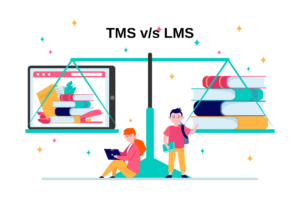Are you looking to make a difference in the world, but unsure how to measure your impact? Look no further! In today’s society, social impact has become increasingly important. Whether you’re running a non-profit organization or simply trying to give back, measuring your impact is crucial for success. This guide will provide you with effective strategies and tools necessary to maximize your social impact and ensure that every action counts. Let’s dive in!

Why It’s Important to Measure Your Social Impact
As the world becomes increasingly connected, the need to have a positive social impact has never been greater. There are a number of ways to measure your social impact, but it’s important to choose the right strategy for your organization.
There are a number of reasons why it’s important to measure your social impact. First, it allows you to see if your programs are actually having the intended effect. It can help you improve your programs and make sure that you’re having the greatest possible impact. Second, it helps you communicate your results to funders, investors, and other stakeholders.
What is Impact Measurement?
Impact measurement is the process of assessing the positive and negative outcomes of a particular program or intervention. It helps organizations to understand whether their efforts are making a difference, and if so, how much of a difference. Impact measurement can be used to improve program design and implementation, track progress over time, and make decisions about resource allocation.
There are many different ways to measure impact, and no single approach is right for all organizations. The most important thing is to choose an approach that is aligned with your organization’s goals and objectives. Some common methods of impact measurement include surveys, interviews, focus groups, observation, case studies, and data analysis.
When choosing an impact measurement strategy, there are a few things to keep in mind:
- What are you trying to measure? Make sure your chosen method will allow you to collect the data you need.
- How many resources (time, money, etc.) are you willing to invest in impact measurement? Keep in mind that more sophisticated methods may require more resources.
- Who will be responsible for collecting and analyzing data? Make sure you have the staff or volunteers in place to do this work and that data collection is in sync with the activities of your organization, you do not have to put additional resources into preparing and collecting the data
- How often do you need data? Choose a method that will allow you to collect data as frequently as you need it.
Common Challenges Faced in Measuring Social Impact
There are many challenges that organizations face when trying to measure their social impact. One common challenge is determining what metrics to use. There are a variety of metrics that can be used to measure social impact, and it can be difficult to determine which ones are most relevant to your organization. Another common challenge is collecting accurate data. This data can be difficult to obtain, and it is important to make sure that it is representative of the population you are trying to serve. Additionally, social impact can be difficult to quantify, and there is often a trade-off between rigor and practicality. Organizations need to find a balance between these two factors in order to effectively measure their social impact.

Types of Impact Measurement Strategies
There are a number of different ways to measure social impact. One popular method is called “outcome mapping.” This approach focuses on tracking changes in behavior or outcomes over time. Another common method is called “logic modeling.” This approach involves creating a model that shows how your program is supposed to work and then measuring whether or not it actually does what you expect it to do.
No matter which method you choose, it’s important to be clear about what you want to measure and why it matters, and how accurate data will be available. Once you’ve done that, you can start collecting data and begin making improvements based on what you learn.
Collection Of Impact Data
Once you’ve selected an impact measurement strategy, it’s important to put together a plan for how you will collect and analyze social impact data. This plan should be detailed and should include steps for data entry, analysis, and reporting. This will help ensure that you are collecting accurate and meaningful data, which can be used to make informed decisions. Project managers should develop a robust & and easy-to-implement plan to routinely
gather data on activities and outcomes. Collecting high-quality and routine data sounds easier said than done. Data collection can be a herculean task, especially when it is done on paper forms.
Social impact projects implemented at the grass root level and having limited resources and connectivity issues. The solution to this is to use mobile app-based solutions, like Littera: feedback and survey tools to collect data from anywhere at any time.
Conclusion: Tips on Maximizing Your Social Impact
The lack of data is often the reason why projects fail to sustain themselves over time. When data is of poor quality, stakeholders can’t pinpoint what is going wrong, outcomes become questionable and trust among parties is weakened.
What isn’t measured, cannot be improved. In social impact evaluation, this means the difference between a social project’s ability to save or improve lives and have a sustainable impact. Without data to evaluate progress and performance, the future of a social enterprise is on the tightrope. Any plan to achieve an ambitious goal must be joined with data collection. Social enterprises can make all the difference by mapping early on the sources of data & how it is collected and shared, this will allow them to evaluate their performance and build a healthy relationship with their communities and funding parties.








